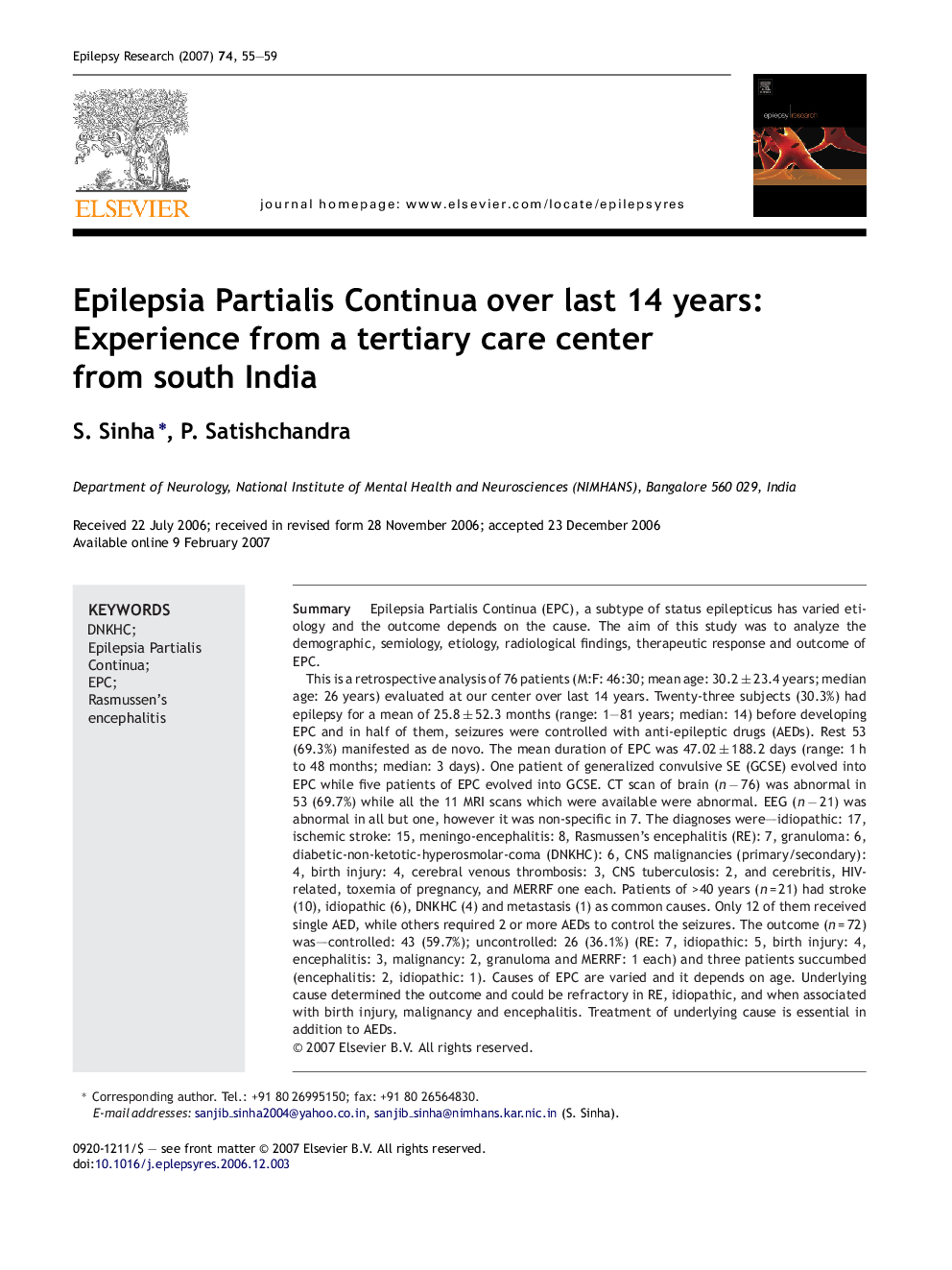| Article ID | Journal | Published Year | Pages | File Type |
|---|---|---|---|---|
| 3053173 | Epilepsy Research | 2007 | 5 Pages |
SummaryEpilepsia Partialis Continua (EPC), a subtype of status epilepticus has varied etiology and the outcome depends on the cause. The aim of this study was to analyze the demographic, semiology, etiology, radiological findings, therapeutic response and outcome of EPC.This is a retrospective analysis of 76 patients (M:F: 46:30; mean age: 30.2 ± 23.4 years; median age: 26 years) evaluated at our center over last 14 years. Twenty-three subjects (30.3%) had epilepsy for a mean of 25.8 ± 52.3 months (range: 1–81 years; median: 14) before developing EPC and in half of them, seizures were controlled with anti-epileptic drugs (AEDs). Rest 53 (69.3%) manifested as de novo. The mean duration of EPC was 47.02 ± 188.2 days (range: 1 h to 48 months; median: 3 days). One patient of generalized convulsive SE (GCSE) evolved into EPC while five patients of EPC evolved into GCSE. CT scan of brain (n − 76) was abnormal in 53 (69.7%) while all the 11 MRI scans which were available were abnormal. EEG (n − 21) was abnormal in all but one, however it was non-specific in 7. The diagnoses were—idiopathic: 17, ischemic stroke: 15, meningo-encephalitis: 8, Rasmussen's encephalitis (RE): 7, granuloma: 6, diabetic-non-ketotic-hyperosmolar-coma (DNKHC): 6, CNS malignancies (primary/secondary): 4, birth injury: 4, cerebral venous thrombosis: 3, CNS tuberculosis: 2, and cerebritis, HIV-related, toxemia of pregnancy, and MERRF one each. Patients of >40 years (n = 21) had stroke (10), idiopathic (6), DNKHC (4) and metastasis (1) as common causes. Only 12 of them received single AED, while others required 2 or more AEDs to control the seizures. The outcome (n = 72) was—controlled: 43 (59.7%); uncontrolled: 26 (36.1%) (RE: 7, idiopathic: 5, birth injury: 4, encephalitis: 3, malignancy: 2, granuloma and MERRF: 1 each) and three patients succumbed (encephalitis: 2, idiopathic: 1). Causes of EPC are varied and it depends on age. Underlying cause determined the outcome and could be refractory in RE, idiopathic, and when associated with birth injury, malignancy and encephalitis. Treatment of underlying cause is essential in addition to AEDs.
